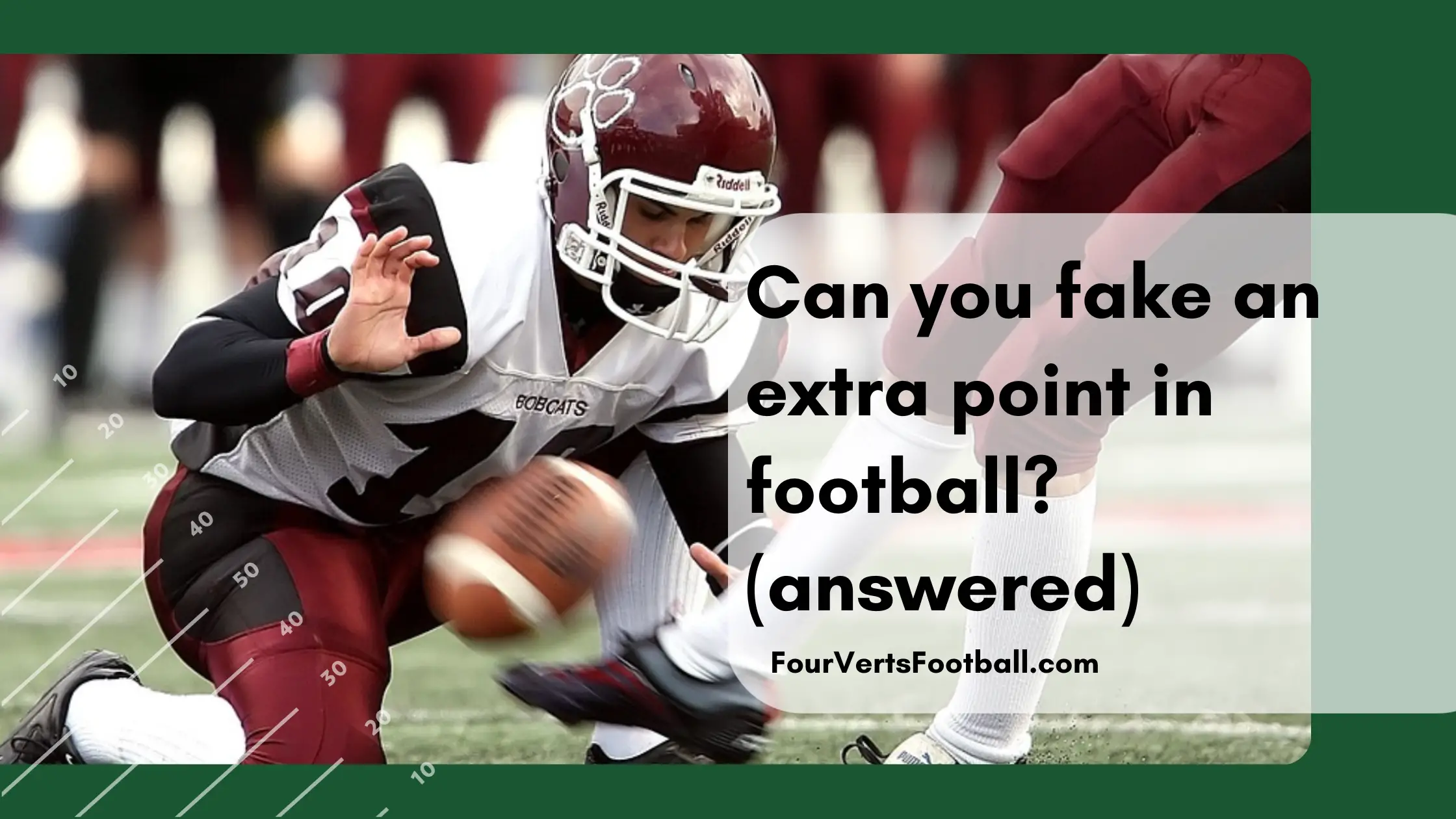Fake field goals are one of the most exciting plays in football. Yet you almost never see NFL teams faking extra points attempts.
Football teams are allowed to fake extra points in NFL and college football. Fake extra points give the offense a chance to earn two points instead of one. An offensive player must get into the endzone with the ball for a fake extra point to be successful.
This article will explain fake extra points in college football, the NFL, and what happens if the defense gets the ball.
Faking Extra Points in College Football
Faking extra points in college football is legal and is attempted from time to time.
In college football, extra points are attempted from the two-yard line. This means the fake field goal unit only needs to progress the ball two yards in order to score the conversion.
With only a few yards to gain these fake field goals are relatively successful. When a fake field goal is successful the offense will earn two points.
Teams are more likely to attempt these fake extra points in the NCAA if they are trailing in the game.
Kicking the one-point conversion is fairly reliable compared to faking the attempt. Many coaches consider these sorts of fakes to be risky.
For that reason, many of coaches chose to play it safe and simply attempt one point kick or go for a two-point conversion with an offensive play.
Fake Extra Points in the NFL
If you watch the NFL regularly you may have noticed there are virtually no faked extra-point attempts.
In the NFL teams are allowed to fake extra points yet rarely do so. A rule change in 2015 changed the extra point field goal to a 33-yard attempt. This meant PATs take place from the fifteen-yard line.
In order for an NFL team to successfully convert a fake PAT attempt, they would have to progress the ball fifteen yards past the line of scrimmage. Doing so would earn their team two points.
If a team wants to go for a two-point conversion they attempt the play from the two-yard line.
By choosing a fake PAT attempt the offense would be taking themselves thirteen yards further away from the endzone.
Ultimately this makes the success rate of faking the PAT much lower than attempting a two-point PAT from the two-yard line.
Since the rule change teams have rarely attempted the fake PAT from the fifteen-yard line.
This could mean that attempting one of these fakes in the NFL could be quite a surprise for the opponent.
As long as two conversions remain at a high success rate teams will rarely fake extra points after scoring a touchdown.
Can you Punt an Extra Point?
Punting on an extra point is legal in football but it is not going to earn you any points.
Punting the ball into the endzone will result in a touchback and no points will be awarded to either team.
That being said football players are allowed to attempt a drop kick in order to score an extra point.
Drop kicks are similar to punts but the player must first allow the ball to bounce off the ground before kicking it.
Due to the shape of the football drop kicks can be unreliable due to the bounce of the ball.
This makes this play fairly risky as an extra point attempt must travel thirty-three yards through the uprights.
Kickers are also able to drop kick on kickoffs, free kicks, and punts. These attempts are quite rare in the NFL but happen from time to time.
Conclusion
Remember you are allowed to fake an extra point attempt in college football and the NFL.
Though due to the distance of extra points, these fakes are extremely rare in the NFL.
In college football, these kicks are attempted from the two-yard line which means the faked PATs are more likely to succeed.

